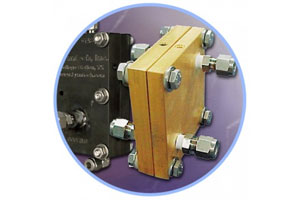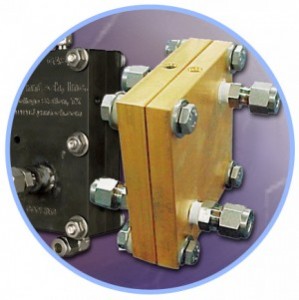Electrochemistry in an Autoclave
Contributed by Dr. Jim Hardy
Introduction
Acknowledgments
When I sit down to write about tricks of the trade and lessons learned in the practice of performing electrochemistry in autoclaves, my first thought is of all of those who preceded me in the adventure. This is only a partial and personal list: They are the researchers, facility engineers, supervisors, and technicians at Bettis and Knolls who paved the way. Some names that come to mind are Rick Garstka, Ted Druga, Bert Setterberg, Rudy Majcher, Jack Carr, Bob Rubino, Doug Thompson, Ken Granger, Rosemary Janik, Bill Archer, Garry Lynch, Irene Rosati, Mike Ochap, Dave Kedzierski, Keith Eklund, George Halbfinger, Mike Danielson, Yinfang Wang. Chief among those in other organizations who shared their stories was Digby Macdonald, who broke ground for many of us and was always eager to share his experiences.
Scope and Intent
This note will cover many topics that have only hot water in common. To fit within the space limitations of an application note, it will be a collection of lessons learned. As such, none of this is purely my own. There will be a stream of consciousness or memory and no part will be comprehensive. There may be future, detailed application notes to cover particular situations in depth, but they will await the questions that we hope this note will stimulate.


 Electrochemical Impedance Spectroscopy can identify problems that limit a fuel cell’s efficiency, by helping to optimize a cell, it can determine anodic and cathodic process mechanisms. EIS is particularly good for measuring the equivalent series resistance of fuel cells, a major source of power loss in a low impedance device. Because of the modeling capability of EIS, you can also extract information on kinetics and mass transport in the fuel cell, both of which are crucial factors to fuel cell performance. EIS is useful in both research and QC applications. EIS of fuel cells runs into some of the same low impedance device and setup limitations that also show up in batteries and supercapacitors.
Electrochemical Impedance Spectroscopy can identify problems that limit a fuel cell’s efficiency, by helping to optimize a cell, it can determine anodic and cathodic process mechanisms. EIS is particularly good for measuring the equivalent series resistance of fuel cells, a major source of power loss in a low impedance device. Because of the modeling capability of EIS, you can also extract information on kinetics and mass transport in the fuel cell, both of which are crucial factors to fuel cell performance. EIS is useful in both research and QC applications. EIS of fuel cells runs into some of the same low impedance device and setup limitations that also show up in batteries and supercapacitors.